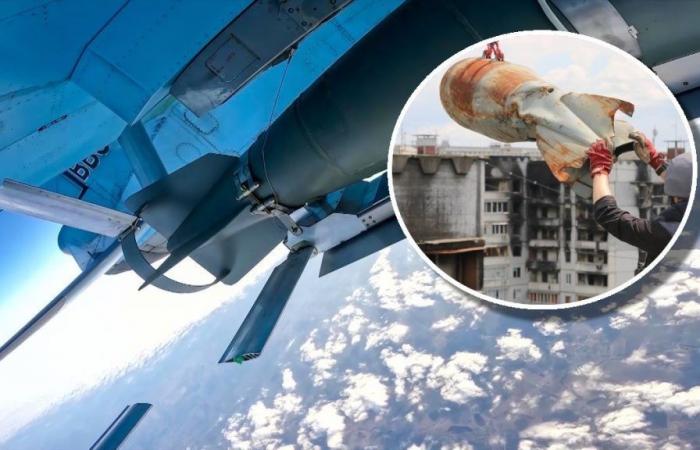A Russian Su-34 armed with FAB-500 bombsImage: Anadolu
Several Russian gliding bombs have crashed… in Russia. And some of them may have caused casualties. Here’s why.
More from “International”
An internal Russian document reveals that the powerful glide bombs that Russia used so effectively to reduce Ukrainian cities to rubble also fell on its own territory. According to the document obtained by the Washington Postand which appears to be a product of the emergency service of the city of Belgorod (in Russia), at least 38 of these bombs, which contributed to Russia’s recent territorial advances, crashed in the Belgorod region, on the border with Ukraine, between April 2023 and April 2024.
Although most of them did not explode, incidents after the period covered by the document suggest that these bombs may have caused Russian casualties.
Follow the war against Ukraine live
These glide bombs are large Soviet-era munitions with guidance systems that experts say often fail, leading to impacts on Russian territory.
Image: watson
“Accidental release of ammunition”
According to the document, at least four bombs fell on the town of Belgorod, population 400,000. Seven more were found in surrounding suburbs. The largest number (11), fell in the border region of Graivoron, where some could not be recovered due to the “difficult operational situation”, understand: the front.
One of the first recorded in Belgorod in April 2023 exploded when it crashed, creating a 15-metre-wide crater, shattering windows and throwing parked cars onto the roofs of buildings. Normally, they don’t explode. The impact occurred at night and no casualties were reported. A day later, a second unexploded bomb was found buried three meters deep.
About the war in Ukraine
The Russian military acknowledged at the time that the explosion was caused by the “accidental release of a munition” from a Russian Su-34 fighter-bomber. The document later confirmed that it was a FAB-500, a glide bomb carrying a 500-kilogram payload.
“Accidents” according to the Russians
Local authorities remain silent about the incidents, only reporting “accidents”, blaming Ukrainian bombings or not reporting the various explosions that rock the region, especially recently.
On May 4 – after the period covered by the document – another bomb fell on Belgorod, injuring seven people and damaging more than 30 homesCiting a source within the emergency services, the media outlet Astra indicated that it was also a FAB-500.
Governor Vyacheslav Gladkov simply said that “an explosion had occurred.” At the time, local independent media Ashes noted: “The governor always indicates the exact cause of the explosion, but this time he has decided not to disclose it.” For the media, the cause was obvious:
“This indirectly confirms that the explosion was caused by a Russian aerial bomb. The nature of the destruction also indicates this”
Did these bombs cause Russian casualties?
On May 12, another explosion destroyed several floors of a residential building in Belgorod, killing 17 people. The Russian military blamed a Ukrainian missile, while the Conflict Intelligence Teama Russian research group specializing in open-source investigations, said video from the scene indicated it was the result of another accidental FAB-500 bombing or a rogue anti-aircraft missile fired by a Russian defense system.
On June 15, an explosion took place in the town of Shebekino, near Belgorod, and part of a five-story building collapsed, killing at least five people. According to his own calculations, Astra estimates that Russia accidentally dropped more than a hundred bombs on its own territory as well as in the occupied areas of eastern Ukraine over the past four months, during which time the use of gliding bombs has increased sharply.
The Russian government has not commented on the failures.
Why continue to use these bombs?
Glide bombs are a Soviet relic from the Cold War. Russia has adapted this large stockpile of bombs for modern warfare by equipping them with guidance systems known as “UMPK kits”, that is, inexpensive wing and navigation systems. This allows Russian Su-34 and Su-35 jets to launch them from a distance of around 65 kilometers, which is beyond the range of most Ukrainian air defense systems.

Workers produce ammunition at a military company in Russia, March 21, 2024. This factory produces, among others, the FAB-500, FAB-1500 and FAB-3000.Keystone
According to Ruslan Leviev, a military expert with the Conflict Intelligence Group who has been tracking Russian military activities in Ukraine since 2014:
“A certain percentage of Russian bombs are defective”
He adds: “This problem has existed since they started using these UMPK kits and it is not fundamentally solved. We believe that these accidental drops are due to the unreliability of these kits, which does not seem to bother the Air Force.».
Since the development of these weapons, and especially since the beginning of 2024, Russia has launched hundreds and hundreds of these bombs on Ukrainian positions, which indicates a fairly low, but not insignificant, failure rate. Leviev explains:
“According to our estimates, only a fraction of these bombs are faulty.”
But, this “does not affect the practical effectiveness of this weapon, as cynical as it may sound.” The latter adds: “Unlike Western high-precision bombs, UMPK kits are produced at a relatively low price and in large quantities, using civilian electronics, where the reliability requirements are much lower.”
They played a decisive role
Glide bombs are also not as accurate as cruise missiles and often miss their target, but due to their explosive power they still cause significant damage.
Unexploded glider bomb found in Kharkiv, Ukraine.Image: image
They increased pressure on Ukraine’s ground-based air defenses and were instrumental in Russia’s demolition of Avdiivka, which its troops captured in mid-February, marking its biggest gain since taking Bakhmut a year ago.
According to a recent analysis by the International Institute for Strategic Studies:
“These weapons allow Russia to supplement an inadequate inventory of air-launched tactical missiles and avoid using free-fall bombs that put pilots at greater risk of being shot down.”
How can Ukraine defend itself?
Ukraine’s best defense against these bombs is the US Patriot surface-to-air missile, which can destroy a Russian plane before it approaches to drop the bomb, but the systems are in short supply.
We were talking about these missiles here
At the end of March, the Ministry of Defense announced the development of a new, heavier version of the glide bomb, the FAB-3000, which weighs twice as much as the previous model (the number 3000 corresponds to the weight in kilos). It was finally deployed on June 21 against the Ukrainian village of Liptsy.
The ministry also said that production of the lighter FAB-500 and FAB-1500 had been significantly increased. (mag)








